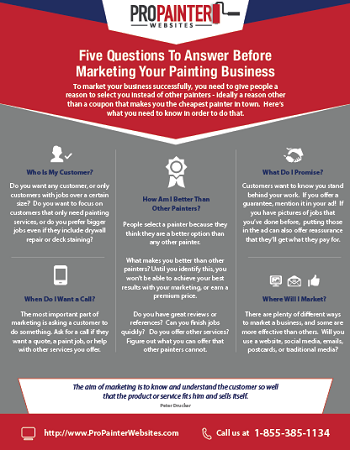Seasonal Considerations For Industrial Outside Painting: What You Required To Know
Seasonal Considerations For Industrial Outside Painting: What You Required To Know
Blog Article
Material By-Fox Whalen
When you're intending an industrial outside painting job, seasonal elements can make or break your results. You'll intend to think about how temperature level and moisture impact paint application and drying out times. Choosing the ideal season can guarantee your paint adheres effectively and lasts longer. But which periods are truly the most effective for this type of job? Allow's check out the key elements that can impact your task's success.
The Influence of Temperature on Paint Application
When you're preparing a business exterior painting task, the temperature can considerably affect exactly how well the paint adheres and dries out.
Preferably, you intend to repaint when temperature levels range between 50 ° F and 85 ° F. If it's too cool, the paint may not heal effectively, leading to problems like peeling or fracturing.
On the flip side, if it's too hot, the paint can dry out as well rapidly, avoiding appropriate adhesion and resulting in an irregular coating.
You should also take into consideration the moment of day; morning or late afternoon offers cooler temperatures, which can be extra beneficial.
Constantly check the manufacturer's recommendations for the certain paint you're using, as they typically give guidance on the suitable temperature level variety for optimal results.
Moisture and Its Impact on Drying Times
Temperature level isn't the only environmental element that influences your industrial exterior paint project; moisture plays a considerable duty too. High humidity levels can reduce drying times drastically, influencing the general high quality of your paint work.
When the air is filled with moisture, the paint takes longer to heal, which can lead to problems like bad bond and a greater danger of mildew development. If you're repainting on an especially damp day, be gotten ready for prolonged wait times between coats.
visit the next web page to keep track of regional weather and plan appropriately. Preferably, go for humidity degrees between 40% and 70% for optimum drying out.
Keeping these factors in mind ensures your task remains on track and supplies a lasting surface.
Best Seasons for Commercial Exterior Painting Projects
What's the best time of year for your industrial exterior paint projects?
Springtime and very early fall are generally your best choices. During https://residential-painters-near11555.blogrenanda.com/40649292/transform-your-space-uncover-the-benefits-of-engaging-expert-home-painters-for-your-home , temperatures are light, and moisture degrees are often reduced, creating perfect problems for paint application and drying.
Stay clear of summer's intense heat, which can cause paint to completely dry too swiftly, leading to bad adhesion and finish. In a similar way, wintertime's chilly temperature levels can impede proper drying out and treating, running the risk of the longevity of your paint work.
Aim for days with temperature levels in between 50 ° F and 85 ° F for optimal results. Keep in mind to examine the neighborhood weather forecast for rain, as wet problems can spoil your task.
Preparation around these elements guarantees your paint job runs efficiently and lasts longer.
Final thought
Finally, planning your commercial external paint tasks around seasonal considerations can make a substantial distinction in the outcome. By scheduling work during the ideal temperatures and humidity levels, you'll make certain much better bond and drying times. Keep in mind to watch on regional weather forecasts and pick the right time of year-- spring and early autumn are your best options. Taking these steps will certainly help you accomplish a long lasting and specialist surface that lasts.
